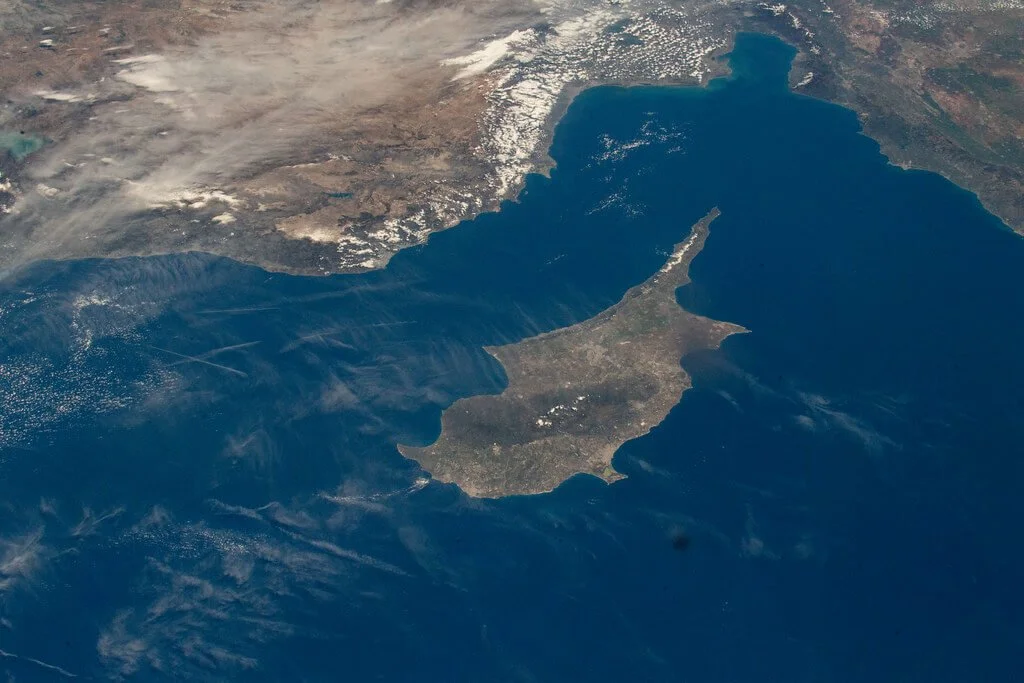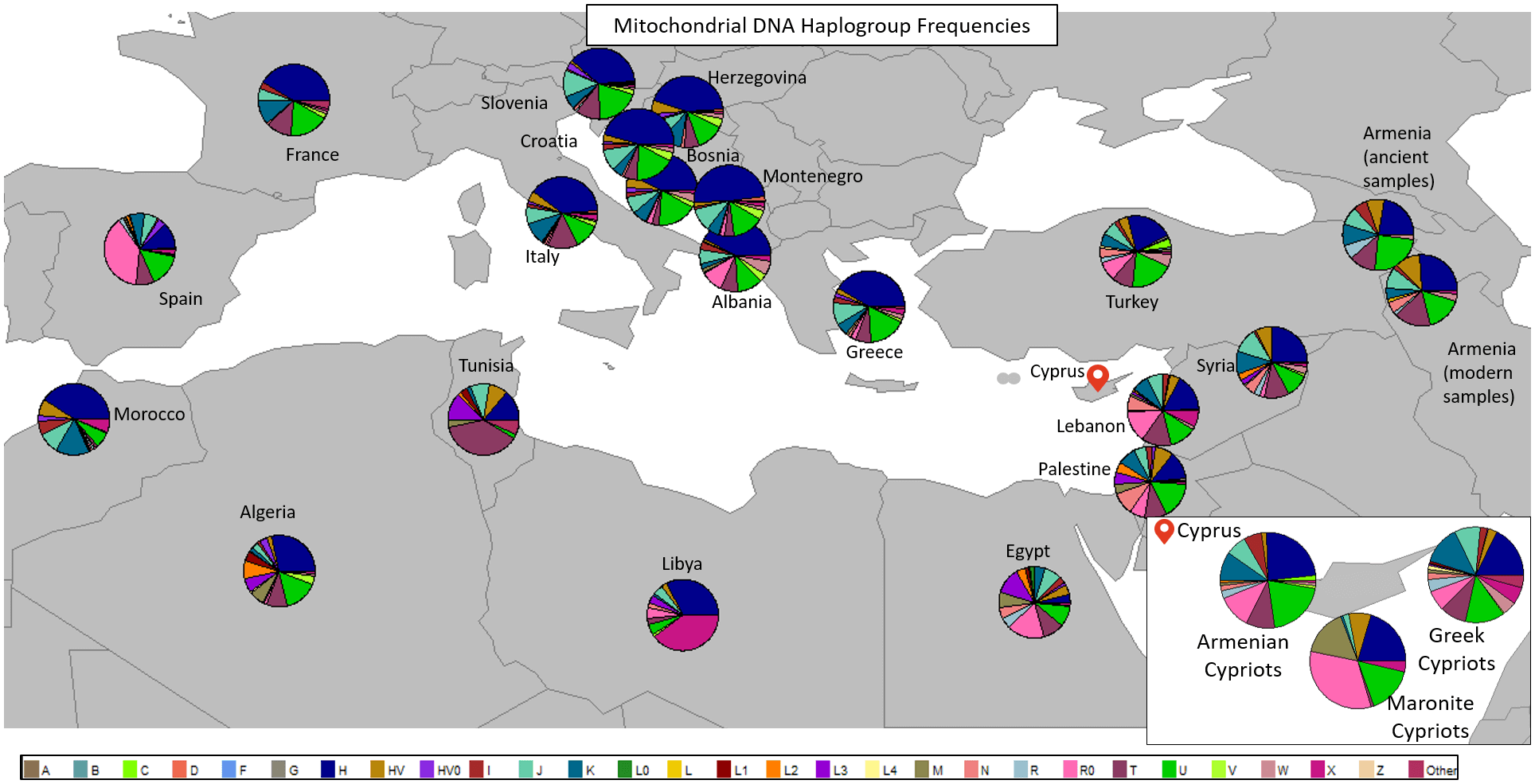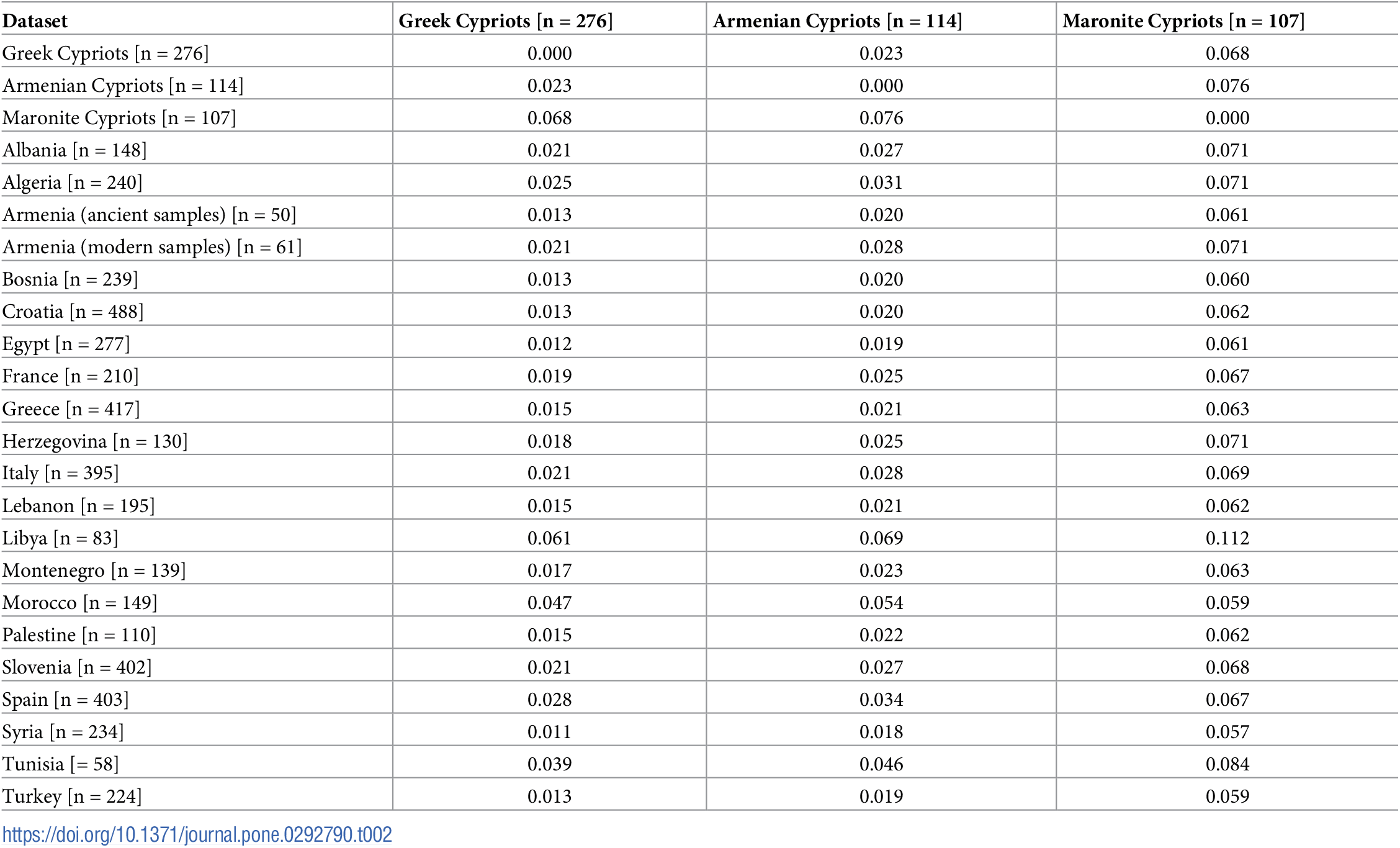The island of Cyprus, nestled in the heart of the Mediterranean, has been a crossroads of civilizations for millennia, its strategic geographic location making it a jewel coveted by various conquering populations. This rich historical tapestry is reflected in the diverse genetic heritage of its inhabitants. A groundbreaking study by Moutsouri et al. (2024) published at PLOS ONE delves into the mitochondrial DNA (mtDNA) of Greek Cypriots, Armenian Cypriots, and Maronite Cypriots, offering unprecedented insights into the maternal ancestry of these communities.
Cyprus's complex history of settlement, conquest, and migration is mirrored in the genetic makeup of its people. The island has seen the arrival of Assyrians, Crusaders, Turks, and others, each leaving their mark on the genetic landscape. The introduction of mitochondrial DNA analysis into the study of Cypriot populations opens a new chapter in understanding how these historical movements have shaped the present-day genetic diversity of the island.
Fig 3. Mitochondrial DNA haplogroup frequencies among Cypriots and countries of interest.
The mappies show the haplogroup frequencies. The zoomed in portion shows the haplogroup frequencies of the tested Cypriot samples. Each haplogroup is indicated with different colour.
The study analyzed 406 unrelated Cypriot samples, revealing that Greek Cypriots and Armenian Cypriots share a closer genetic affinity compared to Maronite Cypriots. This finding suggests a nuanced genetic interplay among the communities, reflective of their distinct historical migrations and interactions. The prevalence of haplogroups H and U further underscores a shared maternal lineage that likely traces back to the Neolithic period and the Bronze Age, highlighting the deep-rooted connections between the inhabitants of Cyprus and the broader Mediterranean and Near Eastern regions.
The genetic differentiation observed among the Cypriot communities offers a fascinating glimpse into the island's history of settlement and migration. Maronite Cypriots, with their unique genetic profile, provide a compelling case study of a more homogeneous group, possibly due to their historical practice of endogamy. The study's comprehensive analysis, encompassing genetic distances, haplogroup frequencies, and migration paths, paints a detailed picture of the genetic landscape of Cyprus, revealing the intricate mosaic of its maternal ancestry.
Table 2. Calculated genetic distances between Cypriots and the countries of interest.
This research not only enriches our understanding of the genetic heritage of Cyprus but also contributes to the broader field of Mediterranean and Near Eastern genetic studies. It underscores the importance of mtDNA analysis in unraveling the complex tapestry of human migration and interaction over millennia. The findings from Moutsouri et al.'s study open new avenues for research into the genetic history of Cyprus, offering insights into the shared and distinct genetic legacies that weave together the island's communities.
As Cyprus continues to stand at the crossroads of civilizations, its people embody the genetic legacy of its rich and tumultuous history. This study marks a significant step forward in understanding the genetic diversity of the island, shedding light on the maternal lineages that have shaped the identity of its inhabitants. The implications of this research extend beyond the shores of Cyprus, offering a window into the broader narrative of human migration and settlement in the Mediterranean and the Near East.









